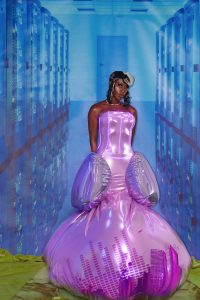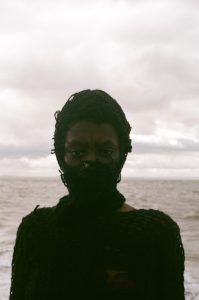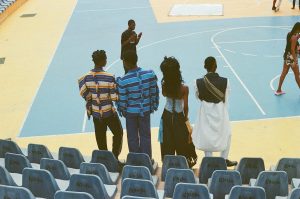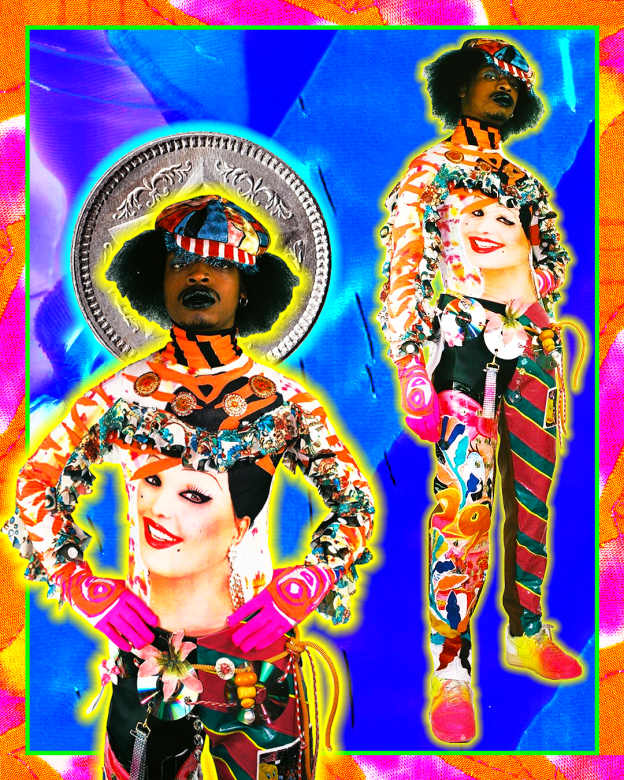
with YOU’LL GET WHAT YOU’RE GIVEN
artwork by THEO WHITE
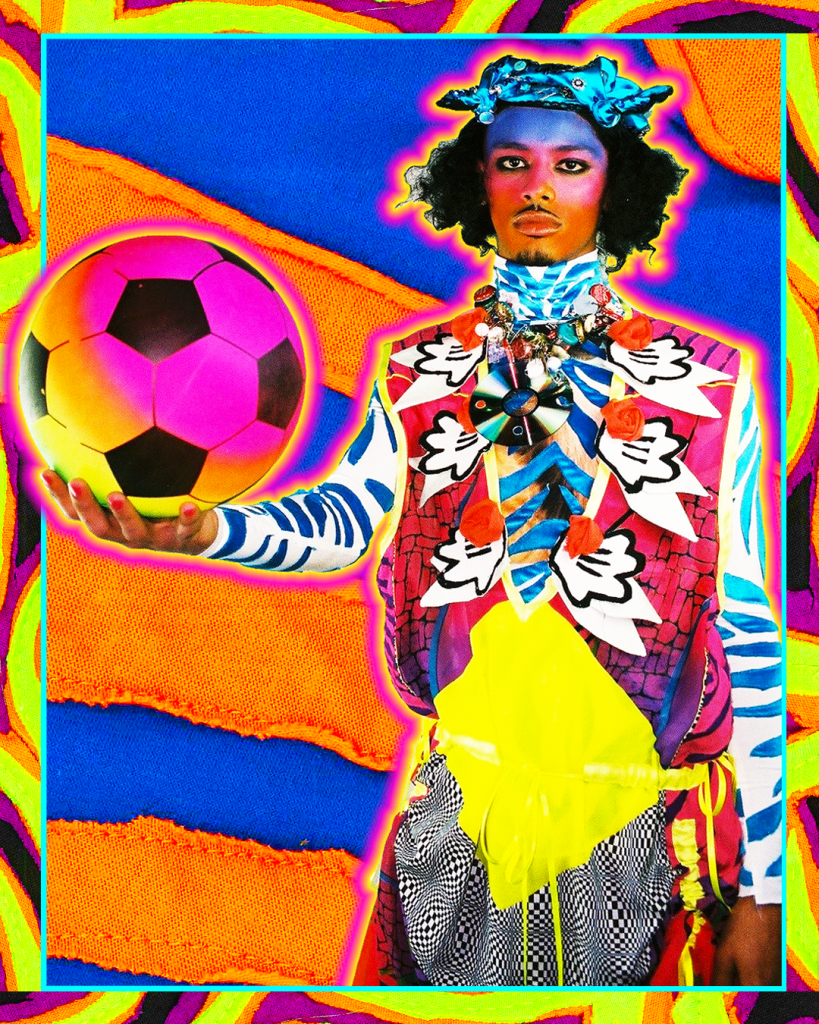
In Heroes and Villains (1969), and in all her work, writer and critic Angela Carter offers contemporary readers a compelling and unsettling vision of the potentials and limits for the transformation of self and society in the face of nuclear or ecological catastrophe, via her ecologically-minded, fantastic, and psychoanalytically-inflected presentation of clothes.
Carter’s emphasis on clothing underscores subjectivity not as stable, unified, or self-certain, but rather as fluid, porous, uncertain, and more than that, rooted in destruction. In Fashion and Psychoanalysis, Alison Bancroft writes that clothing “provokes the question of what is beneath it. . . . Such knowledge, even if it were possible to attain, would strike at the very heart of subjective unity, demonstrating that the symbolic belief of the whole is in fact an impossibility.” In a novel like Heroes and Villains, “written clothing,” to borrow Roland Barthes’s term in his seminal The Fashion System, also provokes the question of “what lies beneath,” inviting reflection on the illusory and fluid qualities of the self. From clothing, Carter moves toward an understanding of subjectivity and the fantasy-tinged experience of reality that resonates with Sabina Spielrein’s unique, early formulation of the “death instinct,” wherein destruction and creation are one.
In her 1912 essay “Destruction as the Cause of Coming into Being,” Spielrein writes: “No change can take place without destruction of the former condition.” Heroes and Villains explores a similar premise about reality, embracing destruction as part of human creation in general. As Lorna Sage puts it: “Starting with ends, ending with beginnings, the Angela Carter of the 1960s was experimenting with different ways of opening up her texts.” Heroes and Villains follows such a formula; set after an apparent nuclear catastrophe, and following a young woman named Marianne as she abandons her sheltered life to join a young man named Jewel and his violent clan, the novel begins with the end of the world, ending with the only possible hope for a new beginning in the image of a pregnant woman and her final helpmate—an insane child tenderly cradling a violent, dying man.
In her 1988 essay “Truly It Felt Like Year One,” Carter evokes the sense of beginning with ends as she looks back nostalgically on the optimism and upheaval of the 1960s. For Carter, counterculture, in its rejection of outmoded social and political forms, operated much as she did in her work and life. This “evolving the part to play” is born from a mix of reality and utopian fantasy; holding the space between what is, and what might be. In Carter’s ethic, counterculture should stand for the “boundary between fantasy and concrete political action.” In Heroes and Villains Carter partly writes about clothing to indicate her initial attraction to these elements of counterculture, and also to outline her ultimate critique of the privileged and predominantly white hippies that comprised a certain portion of it in the 1960s. Much like the best expressions of counterculture, for Carter subjectivity itself is vacillating, uncertain, and rooted, not in fixed categories of identity, but in the fluid experience of fantasy. Carter presents gender in particular as a rigid, socially-constructed category that one does not choose, one antithetical to this uncertain, fluid, fantasy-based notion of self, one that offers an unexpected theoretical accord with the work of Sabina Spielrein [1].
Both Spielrein and Carter find, in the destructive core of creation, implications for a fluid and collective, rather than static and individualistic, understanding of the self. Spielrein writes that “in our depths, there is something that . . . wills self-injury.” She goes on to say that “ego is something completely unessential, continually changing.” Ultimately, she argues that the will toward self-injury is the will to breakdown this “unessential” ego and to connect to a collective: “The depth of our psyche knows no ‘I’, but only its summation, the ‘We’.” Carter also depicts characters in a state of internal and external material destruction. Her characters are “continually changing” their clothes, and their selves. Throughout Heroes and Villains, Carter shows readers that responding to humanity’s internal drive toward apocalypse in the post-industrial, nuclear age means transforming static social systems: embracing the changeable and destructive core.
In her nonfiction, Carter makes clear her interest in “the breakdown of social interaction and the death of social systems.” In her often-cited 1967 essay “Notes for a Theory of Sixties Style,” Carter sees evidence of such a breakdown in the clothing of the late 1960s. She writes that “this rainbow proliferation of all kinds of fancy dress shows a new freedom many people fear, especially those with something to lose when the frozen, repressive, role-playing world properly stands to melt.” Carter was drawn to these visible politics, these expressions of the fantasy of another world within the current one, represented in the clothing of many groups of the 1960s counterculture, with greater or lesser success. In Heroes and Villains, Carter explores the limits of her attraction to countercultural elements by creating the troublingly named fictional group, the ‘Barbarians’. Interestingly, her use of this term dissociates from the standard, patriarchal, neo-colonialist mobilization of it. In Carter’s world, the Barbarians are a stand-in for the hippie counterculture of the 1960s, which she must ultimately reject since neither the fictional nor historical group can fully let go of the old world order that oppresses, and destroys, but does not re-create.
In Heroes and Villains, Marianne’s first impression of the Barbarians is characterized by their clothing. Carter writes:
“The women . . . had blouses, some beautifully embroidered, and rough, sleeveless jackets usually of either fur or leather; some wore Soldiers’ jackets though the black leather had been transformed by the application of beads, braiding and feathers. . . . Their hair was wound with ribbons and feathers. . . . Most were barefoot, though some wore stolen boots or sandals made of straw.”
The “beautifully embroidered blouses,” “sleeveless jackets usually of either fur or leather,” and “hair . . . wound with ribbons and feathers” evoke strong images of the hippies of the 1960s. In fact, many of Carter’s descriptions of the Barbarians’ clothing read like a refrain for her descriptions of the fashions of the era. In “Notes for a Theory of Sixties Style” she writes:
“A young girl, invited to a party, left to herself (no mother to guide her), might well select the following ensemble: a Mexican cotton wedding dress (though she’s not a bride, probably no virgin, either—thus at one sweep turning a garment which in its original environment is an infinitely potent symbol into a piece of decoration); her grandmother’s button boots (once designed to show off the small feet and moneyed leisure of an Edwardian middle class who didn’t need to work and rarely had to walk); her mother’s fox fur (bought to demonstrate her father’s status); and her old school beret dug out of the loft because she saw Faye Dunaway in Bonnie and Clyde.”
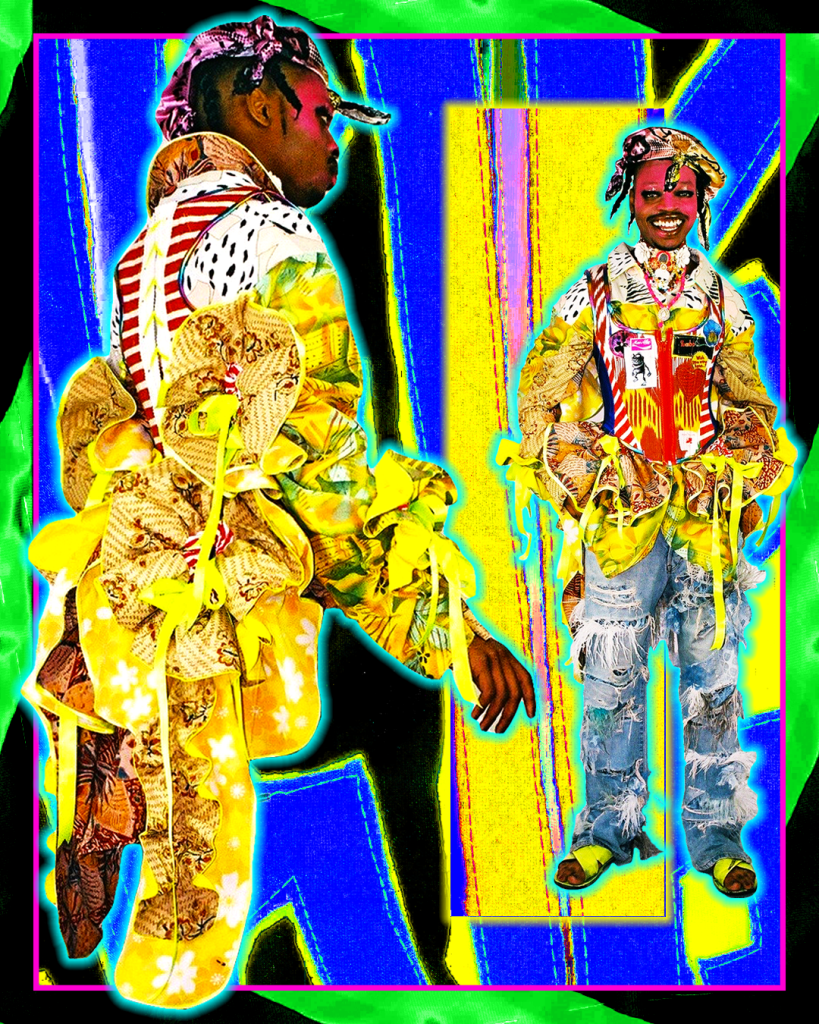
Carter writes, “these eclectic fragments, robbed of their symbolic content . . . form a new whole [which] involves a new attitude to the self which is thus adorned.” As she went on to realize in the years that followed, this “new attitude” was not enough. Coming to “ravage, steal, despoil, rape and, if necessary, to kill,” the Barbarians are not truly holding the place for the fantasy of a new world, but are instead drowning in the destructive dreams of the one that has been lost.
Carter demands her readers recognize the depth of the radical transformation this fictional world has undergone, and so practice letting go of any nostalgia for what has been lost. She writes: “Outside the [protected] communities, the order of nature was awry.” That is, plant and animal life have been brutally altered by human intervention: nuclear destruction on a global scale. The results are fantastical, if grotesque, for example, “a magic sunflower fully two feet across.” As in our own experience of the Anthropocene, the non-human world can no longer rightly be considered separate from the human one, since all of nature has been changed and mutated by the effects of human activity [2]. The group called the ‘Out People’ most fully embody this intermingling of human and non-human, marked by their unique ‘clothing’: the grotesque mutations of their very bodies.
Carter describes one of the Out People as:
“. . . naked, but for a loincloth of animal skin, and covered with festering sores. His arms were very short because they lacked elbows and were unnaturally hinged too low down on a body curiously warped and out of true. His face was marked with a gigantic cicatrice and the nose had been omitted; his nostrils were twin pits between his eyes. His canine teeth had grown into fangs.”
Like the sunflower two feet across, the Out People have been profoundly changed by the nuclear waste that infects the world around them. While the Barbarians dress themselves in the refuse of the past, the Out People are fully present in the world of the now.
Beyond the Out People, one key character bears the most compelling, ultimately important resemblance to them, the insane child who has suffered years of fantastical abuse under his false-profit of a father. Carter writes:
“The golden weeds in the courtyard scattered pollen on the green skin of the boy on the chain, who lay asleep on the sun-warmed stones, his hair floating out in a muddy puddle. There were marks of a recent beating on his body. If she had had a knife, she would have tried to set him free but she had no knife.”
The child’s written clothing, his “green skin” and the pollen scattered on him conveys the impression that he is both human and non-human, as does the chain around his neck; all disturbing resonances to global histories of white supremacy and colonialism. More than that, the chain makes obvious the violent abuse he has suffered. Much like the Out People’s deformities, the marks on the child’s body are his main accessory. Despite these marks, Carter describes the child flippantly here and throughout, denying readers a deeply sentimental response to his suffering, and forcing, instead, analysis and thought. Still, in Marianne’s desire to free him there is a glimmer of compassion and love; feelings that are continually frustrated in the rest of the novel.
Carter doesn’t glorify his abuse, but she does afford the child a unique status, especially in the novel’s final moments. Speaking to the now-pregnant Marianne, he describes the novel’s final destruction, the death of Marianne’s lover, Jewel and says:
“He was writhing around and biting his lips to stop hisself making a noise, in case there were any more of them, and I held him, to keep him still, I suppose. Nobody else had time, he was swearing and cursing and they were scrabbling away at a hole to throw him into, but I held him and I felt him go. I was holding him and then he wasn’t there anymore, so I put pebbles on his eyelids to keep his eyes shut. And there was nothing no more.”
Any sentimental feelings the reader might have after reading this description are quickly frustrated when the boy then “giggled briefly.” And yet, the image of a young boy holding a violent, dying man resonates as a symbol of the tenderness necessary to successfully hold destruction in love’s embrace.
The layers in this moment of the novel, the image of the child dressed only in the marks of the violence he has suffered, and in the experience of a mingling between the human and non-human worlds, as he cradles a man in death, then retells the scene to a woman close to giving birth conveys the key elements that Carter combines in this work. In this moment, the meaning of “written clothing” is undone, revealing its deep relevance to the experience and expression of the self; the continuity between the human and the non-human, between fantasy and material reality, and between creation and its terrifying precondition: destruction.
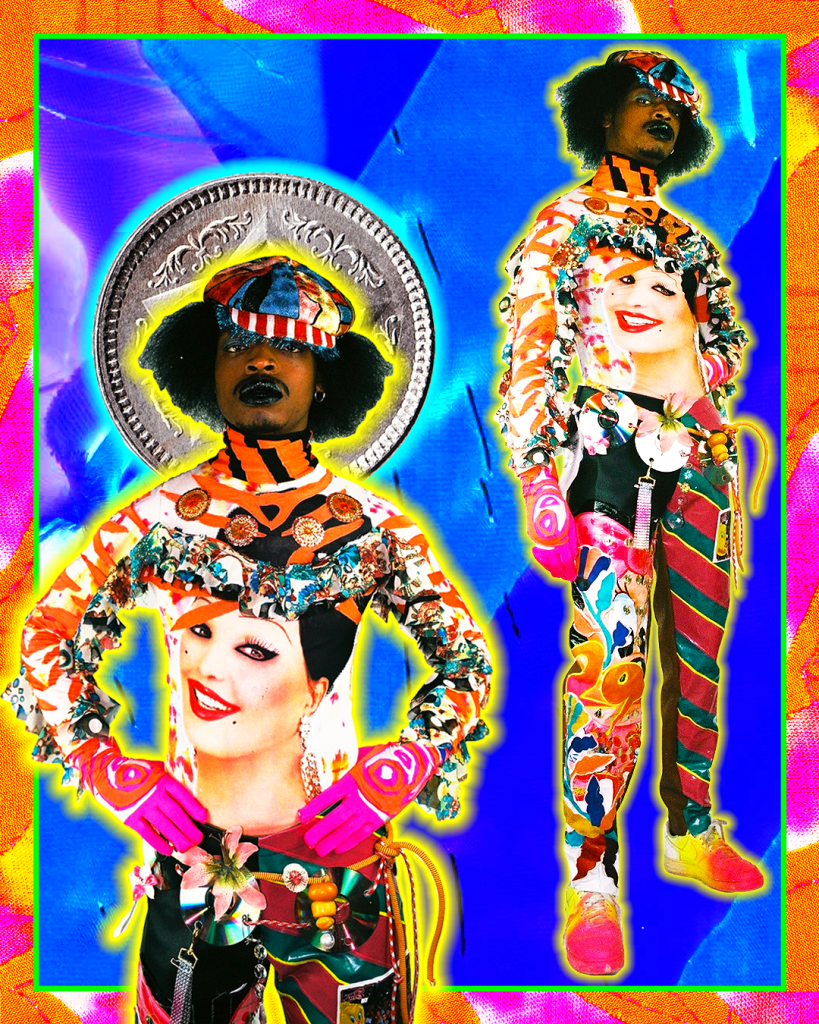
[1] Carter’s reading notes hint at her interest in this topic and include notes on The Social Construction of Reality (1967) by Peter L. Berger and Thomas Lockmann, collected in the British Library’s Manuscript Collection.
Bancroft, Alison. Fashion and Psychoanalysis. I.B. Tauris, 2012.
Barthes, Roland. The Fashion System. Translated by Matthew Ward and Richard Howard, Hill and Wang, 1983.
Carter, Angela. Collected Papers. The British Library’s Western Manuscripts Collection. Consulted March 16-18, 2017.
—. “Elizabeth Wilson: Adorned in Dreams.” Shaking a Leg: Collected Writings, edited by Jenny Uglow, Penguin, 1997.
—. Heroes and Villains. Penguin, 1993.
—. “Notes for a Theory of Sixties Style.” Shaking a Leg: Collected Writings, edited by Jenny Uglow, Penguin, 1997.
Freud, Sigmund. Beyond the Pleasure Principle. Translated by James Strachey, Norton, 1961.
Sage, Lorna. Angela Carter. Northcote House, 1994.
ANNE MARIE WIRTH CAUCHON writer
Anne Marie Wirth Cauchon is Editor-in-Chief of Stillpoint Magazine, Creative Director of Stillpoint Engage and the PrairieCare Institute’s Center for Applied Psychoanalysis, the mother of two, a literary critic, and the author of the novel Nothing.
THEO WHITE artist
Theo White is a London-based artist, art director, and stylist. His primary medium is photography. His work aims to confront and explore the intersections of his own identity as a black queer man. He simultaneously aims to subvert stereotypes around race and gender especially against contemporary British social norms and expectations. Theo has exhibited his work at Soft Opening Gallery, Tate Modern, and Now Gallery, and has been published in Dazed & Confused, Time Out, Hunger, and ManAboutTown.
Alongside his creative work, Theo is the editor and publisher of THEOWHITEZINE which strives to offer a platform for the introspection and celebration of black queerness and black queer communities. Theo is currently working on Issue 2 of TheoWhiteZine, titled COURAGE, due to be published in Summer 2019.
YOU’LL GET WHAT YOU’RE GIVEN was originally published in ID Magazine May 2019, and features clothing by designer MAX ALLEN. Photography by WAJ HUSSAIN.
© Copyright for all texts published in Stillpoint Magazine are held by the authors thereof, and for all visual artworks by the visual artists thereof, effective from the year of publication. Stillpoint Magazine holds copyright to all additional images, branding, design and supplementary texts across stillpointmag.org as well as in additional social media profiles, digital platforms and print materials. All rights reserved.

